TALX: Climate Adaptation Partnership Network
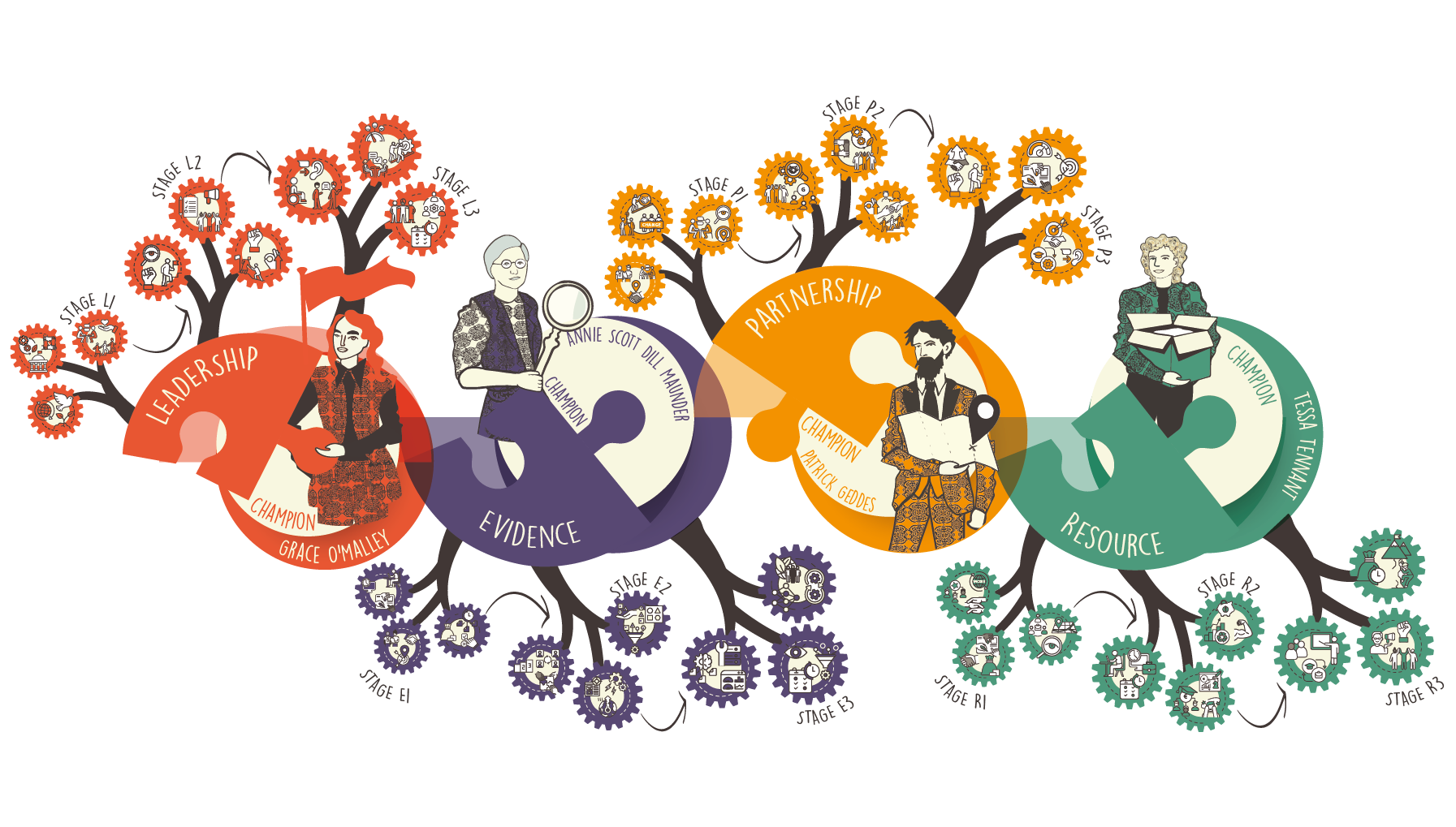
Introduction
As an outcome of the Transboundary Adaptation Learning Exchange (TALX) project funded by the Irish Environmental Protection Agency, The Climate Adaptation Partnership Framework supports place-based adaptation across Ireland and the UK. It provides practical actions to set up and further develop climate adaptation partnerships and includes inspiring case studies and links to a wide variety of tools and resources.
In acknowledgement of the lack of practical guidance to cultivating and maintaining adaptation partnerships across the UK and Ireland, the Adaptation Partnership Framework was developed to address challenges stakeholders may face. Whilst recognizing that all adaptation partnerships are unique, the framework identifies four key attributesthat can help them to develop and work effectively:
- Leadership – Including Vision, Empowerment, and Influence
- Evidence – Including Co-developing & maintaining an evidence base, Understanding & communicating the evidence and Monitoring, evaluating & learning
- Partnership – Including Create a healthy culture, Build strong governance & supporting structures and Collaborate
- Resource – People, Assets & Communication and Funding
Under these focus areas, The Framework provides practical actions that can help partnerships develop these attributes over time. The actions are not prescriptive – one may pick and choose actions that are most relevant to the users in their local context. A set of actions have been developed for each attribute, divided into three stages:
- Stage 1: Initiate – actions for partnerships in the early stages of forming
- Stage 2: Develop – actions for partnerships that have formed and begun working together
- Stage 3: Advance – actions for partnerships that are well established.
The Framework also includes practical tools, inspiring case studies from adaptation partnerships across Ireland and the UK, and surveys to help partnerships gauge where they are at on their adaptation journey.
This weADAPT article provides a background to the TALX project. The article on the right hand side is a TALX case study using the tools of the Adaptation Partnership Framework in the Clyde. Please access the document text for more details.
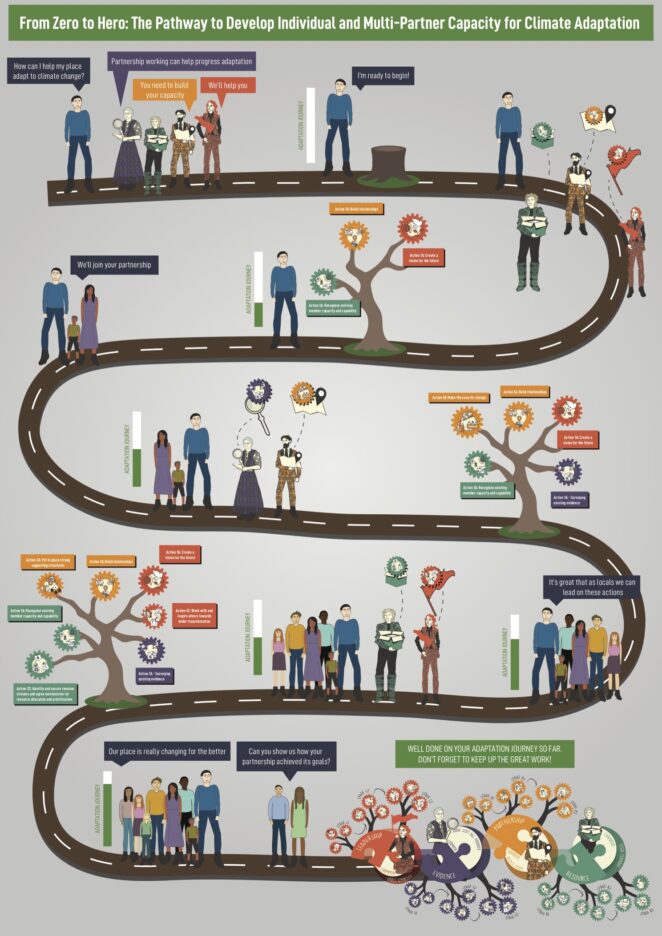
Leadership
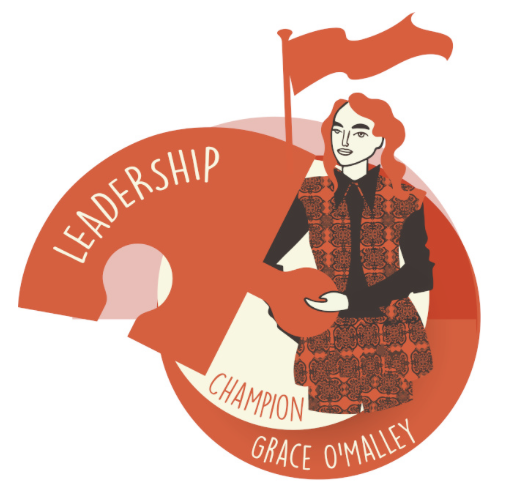
The establishment of many adaptation partnerships is driven by visionary leadership; leadership which is innovative, imaginative, and inspires and empowers others. Over time, many different forms of leadership are required. By developing this capability, impacts can be sustained and increased over the long term.
Key aspects include:
Vision:The challenge of adapting to climate change needs to be well understood by partners needed to lead change. The partnership needs a clear and ambitious vision and purpose to motivate and inspire involvement and action.
Empowerment:Authentic and heartfelt leadership is needed to empower and motivate inclusive action. Adaptation should be developed with people and nature, rather than done to them. It must also take account of wider challenges, opportunities, and priorities.
Influence:The partnership will need to take a strategic approach to developing influence. Techniques such as stakeholder analysis and power mapping can help to scope targeted engagement and influencing. Identifying windows of opportunity and levers of change helps to focus effort to influence change, including through policy and legal drivers.
Evidence
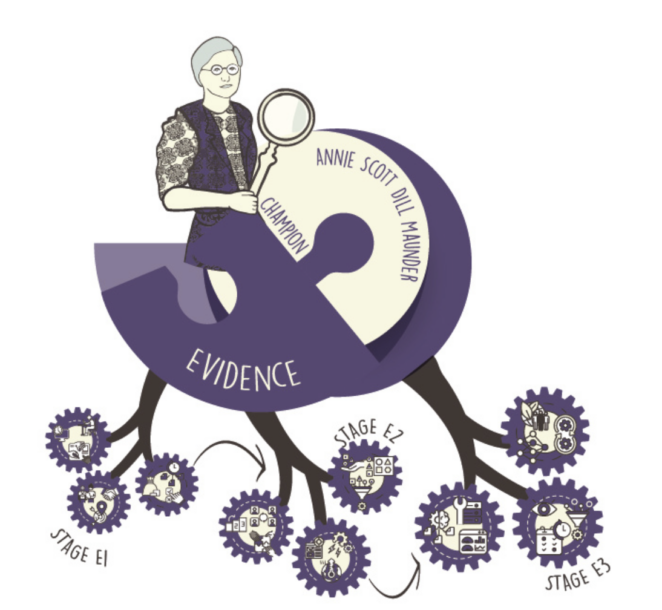
Evidence is needed to make better decisions when developing adaptation partnerships and assessing impacts, risks and progress. It supports evolving knowledge of what works and tests assumptions embedded in adaptation plans to inform and improve future practice and help design adaptation options. The evidence base should be co-developed and include local knowledge and lived experience as well as more formal data sources.
Key aspects include:
Co-developing and maintaining an evidence base:The partnership should focus on co-developing an evidence base by building trust, supporting transparency and includeing more than the usual suspects (such as the council, land owners, government and larger stakeholders) from the beginning. Local knowledge and lived experience should be valued equally alongside more formal data and evidence from peer reviewed publications and official sources.
Communicating and understanding evidence:Evidence is only useful if it is relevant, understandable and useable. A place-based partnership will have a range of people and organisations involved and they will interact with the evidence in different ways. To bring evidence to life it needs to be translated into knowledge and shared in accessible formats which are useful to the people who need to know about it at that point in time.
Monitoring, evaluating and learning:It is important to be able to monitor and evaluate the impact of adaptation plans and progress of places using indicators related to discrete ‘bits’ of evidence gathered, and how it and the processes which shape and interconnect the evidence shift over temporal and spatial scales. Adaptation will require both incremental (small) and systemic changes (transformative and/or holistic changes). To support this the partnership should develop evidence and insights of interactions between climate risks and wider social, economic, and natural systems.
Partnership
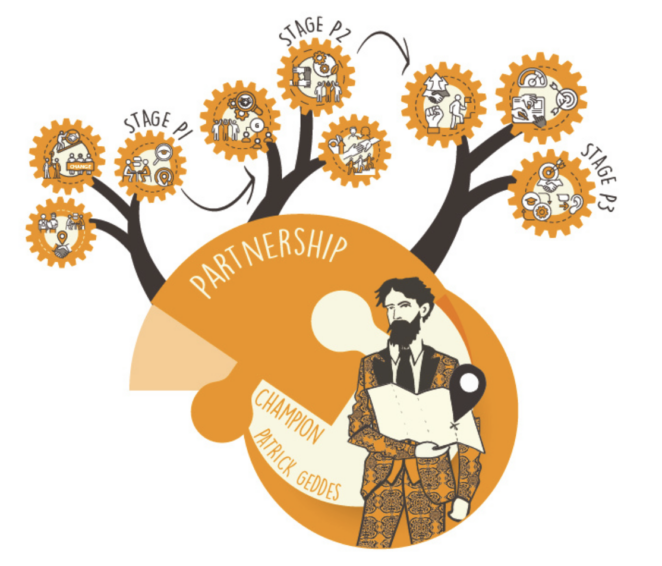
Partnership is a decision to work together. It’s not easy but the rewards are worth it. Adaptation partnerships have a crucial role to play in locally led, fair and just adaptation. By developing this capability, it is possible to create the conditions needed for people to work together effectively.
Key aspects include:
Creating a healthy culture:Partnerships with a healthy culture are built on trust and shared understanding. They share power and influence fairly, and enable partners to contribute fully and equally. Conflict and emotion are acknowledged and addressed as an opportunity to learn and grow.
Building strong governance and supporting structures:Governance and structures are in place to provide a clear process for decision making, accountability, roles, and responsibilities. They evolve as the partnership develops and matures over time and should enable rather than restrict change.
Collaborate:Effective partnerships focus on collaboration and co-development. They create inclusive spaces where partners and wider stakeholders can actively contribute to establish the case for a place-based adaptation partnership, agree ways of working and build a strong set of actions.
Resource
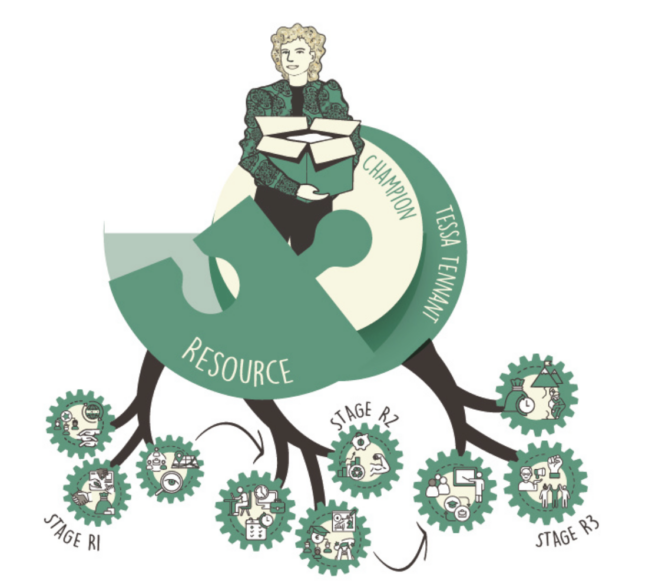
Investment in a partnership approach can leverage significant added value and additional resources. By developing this capability, partners can achieve economies of scale, avoid duplication of effort and benefit from diverse skills and expertise. Partners can also build a strong case for securing new resources to build partnership working and deliver joint adaptation projects.
Key aspects include:
People:The partnership should include people from diverse backgrounds, including under-represented groups and put steps in place to ensure they are valued and can contribute actively. People who can support, lead and co-ordinate activities are needed, alongside people who can provide specific knowledge such as local knowledge, risk assessment, data and analytics or funding and finance expertise.
Assets and communication resources:Sharing assets such as data, technology and communication resources will enable the partnership to go further, faster. Where appropriate, large scale adaptation projects or assets such as hazard warning systems, blue and green infrastructure or coastal adaptation measures can be jointly owned, managed or developed.
Funding:Setting up, leading, and coordinating partnerships requires significant time and effort. Some partnerships are run by volunteers who give significant amounts of time. In many cases funding will be required to pay for staff time, and partners will need to make a strong case for funding co-ordination of the partnership.
Tools and case studies
The tools under each component of the Adaptation Partnership Framework have already been successfully applied, evidenced by numerous case studies. For instance, they were leveraged under Climate Ready Clyde in Scotland, which is the leading initiative working to ensure Glasgow City Region is able to adapt to the challenges of our changing climate, and for everyone to benefit from this transformation. Central outcomes, supported by the application of the Framework, have been the discussions to establish adaptation partnerships in Ireland (Ballina and the surrounding areas) and Northern Ireland (Derry City and Strabane District).
For further details, see a case study example from the featured downloads of this article, and visit the site of the Adaptation Partnership Framework for more information regarding tools and approaches for successfully creating and maintaining long-lasting partnerships.
(0) Comments
There is no content